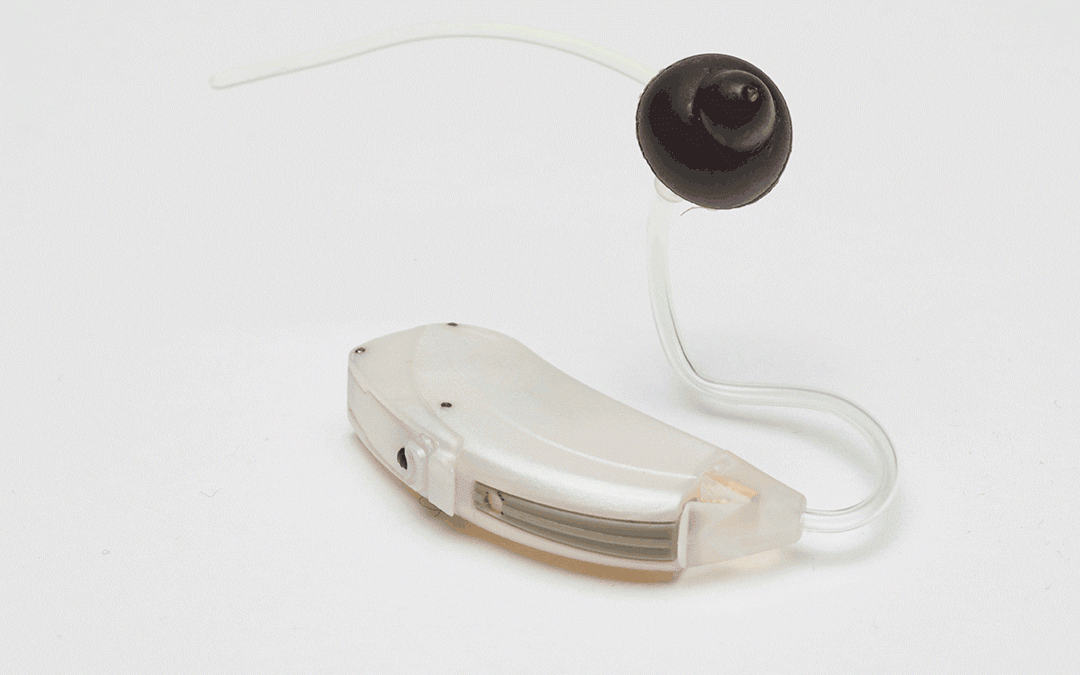Better Hearing Blog

Hearing Loss’ Ripple Effect
Anyone who suffers from hearing loss should bear in mind that appropriate treatment with a hearing instrument not only benefits the person wearing it, but also those with whom he or she communicates on a regular basis. In fact, the spouse, siblings, friends, relatives, colleagues, and caregivers of those suffering from hearing impairment often report just as much miscommunication with hearing-impaired individuals as the people with the hearing loss. When researchers recently reviewed more than 70 previous studies that looked into the complaints made by people with hearing loss and those closest to them, they found that complaints related to effort in communication was the most-reported problem among those in the hearing-impaired person’s family, social, and work circles.
The first step toward better hearing is recognizing that a hearing problem exists. Having a hearing test is the second step. If the signs are there—frequently misunderstanding what is being said and asking people to repeat themselves—please call us at BETTER HEARING CENTER. We have the answers to many of the questions you’ll probably have regarding your hearing impairment. From sound, knowledgeable advice to custom fittings to follow-up care from an audiologist, you can rely on us. Call us to arrange a hearing test at New Hampshire’s premier hearing care provider.
P.S. Many hearing-impaired older adults might be more amenable to wearing hearing instruments if they know how much NOT wearing one was annoying those in their communication circles.

Open to Change
Over the past fifteen years, “thin tube” and “receiver-in-the-ear” (RITE) hearing instruments have come to dominate the “behind-the-ear” (BTE) market. These smaller, stylish designs have a more appealing look, are more comfortable to wear, and are easier to adjust than older BTE models. Because they deliver sound to the wearer’s ear via a thin tube or a “receiver-in-the-ear” (RITE) design that does not entirely block the ear, these hearing instruments are valued for their ability to circumvent the “occlusion effect” that makes the wearer’s voice seem hollow or “boomy.” These “open-fit” instruments are generally recommended for mild to moderate high-frequency losses. If necessary, more occlusive “ear tips” are available to accommodate a greater degree of hearing loss.
Technology is constantly on the move toward innovative ideas and products to bring back the sounds of life to the hearing impaired. If you think your hearing is not what it should be and could stand a boost, we invite you to BETTER HEARING CENTER to see the many marvels that exist today in the hearing industry, all designed to enhance the hearing you have. Have a hearing test soon—call us to schedule an appointment at New Hampshire’s premier hearing care provider. Most insurances accepted for hearing evaluations. We are the only hearing center that has served the Concord, New Hampshire, area for more than 55 years.
P.S. While “receiver-in-the-ear” hearing devices look like open-fit instruments, their receivers are separated from the rest of the electronics (behind the ear) and are placed inside the ear canal.

Distracted Listening
Recent research indicates that listening to something while looking in a different direction slows reaction times, as the brain works to overcome distractions. Whether we are driving or conversing, this finding reinforces the idea that, by casting our gaze in a direction that is different from what we are listening to, we compromise our ability to hear. Researchers found that simply shifting the direction of gaze a few degrees away from a sound source has a significant impact on brain activity. Our brains are wired to expect visual gaze direction to be in alignment with auditory attention. Thus, the whole notion of the validity of multi-tasking must be called into further question.
If you are concerned about your hearing, focus on one task at a time…helping yourself toward maximum hearing capability. It may be one of the most important undertakings of your life. At BETTER HEARING CENTER, we will stake our reputation on your complete satisfaction with our approach to addressing your hearing difficulties. Our state-of-the-art hearing tests are conducted and the results evaluated by an audiologist with advanced training in the art of helping the hearing impaired. If this sounds like it might be a solution for you, why not give New Hampshire’s premier hearing care provider a call?
P.S. The directional microphones available on hearing instruments help wearers align the source of the sound they are hearing with their sight of that source.

Prepare for Landing
Jet travelers often encounter the potentially painful problem (medically known as “barotrauma”) of having their ears blocked and in need of “popping.” Most people respond to this annoying sensation by yawning, which helps to open the Eustachian tubes and regulate pressure in the middle ear. It may also help to sip water and swallow to activate the muscles that open the Eustachian tube. If these methods don’t work, the “Valsava maneuver” may be tried, which involves taking a deep breath and pinch the nose shut. Then, keeping the mouth closed, the individuals tries to gently blow air through his or her nose. Another tactic, the Toynbee maneuver, involves pinching the nose closed and closing the mouth, then trying to swallow.
If you’ve tried just about every tactic you can think of to deal with your diminished hearing—shouting, turning up the volume, avoiding conversation, and withdrawing from social situations—now try an audiologist. At BETTER HEARING CENTER, we have extensive training and skills that enable us to understand and diagnose your loss, state-of-the-art testing facilities, and the very latest in hearing instruments to correct your impairment. Take the first painless step toward better hearing. Call us to schedule a hearing test at New Hampshire’s premier hearing care provider.
P.S. One tactic for popping the ears, called the Frenzel maneuver, involves pinching the nose closed and using the tongue to make a clicking, or “K,” sound.

Another Inconvenient Truth
When older adults shun the use of hearing instruments, it’s often due to the stigma attached to wearing one. Many figure they can endure the inconvenience of missing a few words of conversation if it helps to preserve their youthful visages. The fact is, however, that hearing-impaired people of any age with untreated hearing loss stand to lose a whole lot more than a few bits of conversation. According to a recent small study, more than half of the 100 respondents reported that they could not fully understand what their healthcare practitioners told them, while 43 indicated that background noise and clinicians who talked too fast or too quietly hindered their ability to understand their physicians’ diagnosis and advice.
We believe an unaddressed hearing impairment is actually more noticeable than a hearing instrument, and we urge you to get help if your hearing isn’t what it once was. Our methods at BETTER HEARING CENTER, include using the most sophisticated technology available today in the hearing industry. This, coupled with the astonishing hearing aids now manufactured and our professionalism and personal attention to your needs, ensures your complete satisfaction with your hearing device. We are New Hampshire’s premier hearing care provider.
P.S. Severe hearing impairments left untreated expose individuals to the possibility that they will not hear ringing phones, doorbells, shouted warnings, and sirens.

Getting the Right Signal
One of the keys to improving the understanding of speech in a noisy environment involves improving the “signal-to-noise” ratio (SNR). An SNR figure indicates how many decibels louder speech is than the surrounding noise. The higher the SNR, the easier it is for the listener to understand speech. One way to enhance the separation between speech and noise, and thus improve the SNR, is to use a “directional” hearing instrument. Rather than amplify sound from all directions (as omnidirectional hearing instruments do), a directional hearing instrument amplifies sound from in front of the listener more than from behind. This helps listeners understand conversation by improving the SNR, and it can also improve the wearer’s ability to localize sounds.
Although more sophisticated and technologically advanced than ever before, today’s hearing instruments still keep one simple goal in mind—helping the hearing impaired hear better by making the most of the hearing they have. Hearing instruments of today are becoming smaller, more comfortable, and more invisible, but their benefits are getting bigger and broader. Come find out what’s new at BETTER HEARING CENTER. You just may hear some things you haven’t heard in a long time. We are New Hampshire’s premier hearing care provider.
P.S. A signal-to-noise ratio that is greater than 1:1 means that the signal is louder than the noise.
